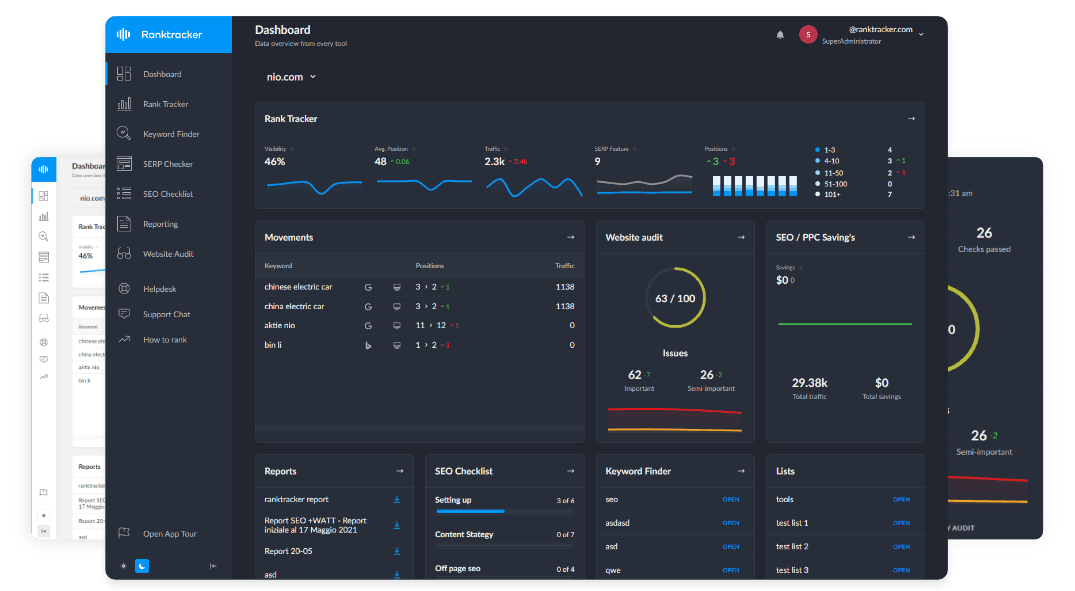Intro
Web developers often find themselves wearing multiple hats—from coding and design to managing client relationships and scaling business operations. The pressure to deliver polished websites rapidly while keeping customers satisfied is immense. This challenge becomes even more pronounced as projects grow in size and complexity. One often overlooked solution that can revolutionize the way web developers scale their businesses is CRM automation.
A shining example of leveraging this strategy comes from MO Agency, a company that has deftly integrated CRM automation into its workflow, enabling smoother operations and superior client management. Exploring what MO Agency has done offers valuable lessons for web developers eager to scale efficiently without sacrificing quality or client engagement.
Understanding the Need for CRM Automation in Web Development
Web development is inherently project-driven, often involving numerous clients, deadlines, and deliverables. As workloads increase, managing communication, follow-ups, and client data manually becomes unsustainable. Without a systematized approach, developers risk missing deadlines, losing track of client preferences, or failing to nurture leads effectively.
Customer Relationship Management (CRM) systems are designed to organize and streamline interactions with current and potential clients. Automation within CRMs takes this a step further by minimizing manual effort, automatically triggering workflows, reminders, and updates.
For web developers, this means more time can be devoted to coding and creative problem-solving rather than administrative tasks. MO Agency’s approach demonstrates that CRM automation isn’t just for sales teams or large enterprises—it’s an essential tool for tech professionals looking to scale.
How MO Agency Uses CRM Automation to Optimize Workflow
MO Agency stands out for integrating CRM automation seamlessly into its operational model. Their system handles everything from lead generation and client onboarding to project tracking and post-launch support. Here are key takeaways web developers can glean from their approach:
Streamlining Lead Capture and Qualification
Instead of manually entering data from potential clients or inquiries, MO Agency uses automated lead capture forms that directly feed into their CRM. This eliminates errors and speeds up the initial response time.
For web developers, implementing similar automated forms on their websites can reduce the friction of acquiring new clients. Using automation to quickly assess whether a lead fits the developer’s target project profile ensures focus remains on high-value opportunities.
Automating Client Onboarding
Starting a new project often requires sharing contracts, collecting requirements, and setting expectations. MO Agency automates much of this onboarding process. Once a lead converts, the system sends welcome emails, schedules kickoff calls, and tracks completion of necessary steps—all without manual intervention.
This structured onboarding ensures consistency, professionalism, and faster project initiation. For developers juggling multiple clients, such automation prevents important details from slipping through the cracks.
Keeping Projects on Track With Automated Reminders
Delays and missed deadlines can damage client relationships and stall business growth. MO Agency leverages automation to send internal reminders and status updates at critical project milestones. These alerts help the team stay accountable and proactive in managing timelines.
The All-in-One Platform for Effective SEO
Behind every successful business is a strong SEO campaign. But with countless optimization tools and techniques out there to choose from, it can be hard to know where to start. Well, fear no more, cause I've got just the thing to help. Presenting the Ranktracker all-in-one platform for effective SEO
We have finally opened registration to Ranktracker absolutely free!
Create a free accountOr Sign in using your credentials
Web developers who adopt similar automated reminders for deliverables and client communications will find it easier to maintain trust and meet expectations. The ability to set automated follow-ups for revisions or approvals also keeps projects moving smoothly.
Enhancing Client Communication and Satisfaction
Post-launch support and ongoing client engagement often get neglected as developers move on to the next project. MO Agency’s CRM automation nurtures client relationships with scheduled check-ins, satisfaction surveys, and helpful content.
This ongoing engagement builds loyalty and increases the likelihood of repeat business or referrals. For developers, automating client communication ensures that the relationship doesn’t end at project delivery but evolves into a sustainable partnership.
Benefits of CRM Automation for Web Developers Looking to Scale
Emulating MO Agency’s use of CRM automation offers clear advantages:
- Time Savings: Automation handles repetitive administrative tasks, freeing developers to focus on technical work and innovation.
- Improved Organization: Centralized client data and automated workflows reduce errors and ensure nothing falls through the cracks.
- Scalability: As client rosters grow, automation maintains efficiency without requiring proportional increases in staffing.
- Better Client Experience: Automated, timely communication fosters professionalism and builds trust.
- Insightful Analytics: Automated CRM systems provide data on sales pipelines, project statuses, and client satisfaction, informing smarter business decisions.
By integrating these tools, web developers can transform how they manage their businesses, moving from reactive firefighting to proactive growth.
Practical Steps for Web Developers to Implement CRM Automation
For developers inspired by MO Agency’s success, here’s how to begin incorporating CRM automation into your workflow:
- Choose the Right CRM: Select a CRM platform that fits your scale and needs. Many offer automation features suitable for small to medium teams.
- Map Your Processes: Identify repetitive tasks and communication points that can be automated—from lead capture to project completion.
- Set Up Automated Workflows: Use the CRM’s automation builder to create triggers, such as sending welcome emails or reminders based on project status.
- Test and Refine: Monitor automation outcomes and adjust as necessary to improve client experience and operational efficiency.
- Train Your Team: Ensure everyone involved understands the CRM processes to maintain smooth collaboration.
By gradually integrating automation, developers can avoid being overwhelmed and see tangible improvements in workflow.
Conclusion
Scaling a web development business requires more than technical skill; it demands effective management of client relationships and operations. MO Agency’s strategic use of CRM automation provides a clear blueprint for developers aiming to grow without sacrificing quality or service.
Automating lead management, onboarding, project tracking, and communication helps save time, stay organized, and improve client satisfaction, enabling developers to handle more projects and build lasting partnerships.
For those ready to adopt this forward-thinking approach, exploring MO Agency’s methodology is an excellent starting point. Their experience shows that with the right tools and mindset, scaling your web development practice through CRM automation is both achievable and rewarding.

